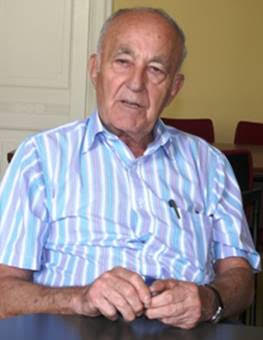
THE VOICE OF INTERNATIONAL LITHUANIA
|
VilNews has its own Google archive! Type a word in the above search box to find any article.
You can also follow us on Facebook. We have two different pages. Click to open and join.
|
Author Archive
- Posted by - (0) Comment
Article 1 of 6
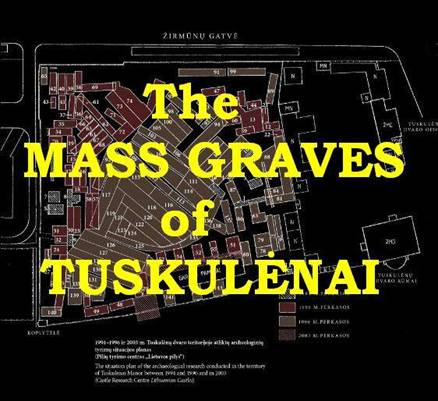
Situation plan created by and property of Castle Research Center Lithuanian Castles. All rights reserved
In 1944, the Soviet Union drove the army of Nazi Germany from the territory of Lithuania and occupied the country for a second time. Repressions against the citizens of our country began without delay. Members of the anti-Soviet armed resistance and underground anti-Soviet organisations, their supporters, farmers, teachers, intelligentsia; politicians, public servants, soldiers, and other officials of former independent Lithuania; and members of the Catholic clergy were arrested, imprisoned, exiled, sentenced to death, and subsequently executed. The convicts were judged by Military Tribunals of internal troops and an Extraordinary Meeting with the State Security Minister of the USSR. Pursuant to the 1926 Criminal Code Article 58 of RSFSR, they imposed penalties which included custody or the death sentence (by shooting). Indictments were based on torture or documents obtained illegally. Between 1944 and 1953, the Extraordinary Meeting convicted at least 11,932 people and the Military Tribunals – at least 22,080.
PART 1 OF 6
CONSEQUENCES OF THE TOTALITARIAN REGIME IN LITHUANIA 1940–1953.
- Bookmark :
- Digg
- del.icio.us
- Stumbleupon
- Redit it
- Posted by - (2) Comment
Article 1 of 6

Situation plan created by and property of Castle Research Center Lithuanian Castles. All rights reserved
In 1944, the Soviet Union drove the army of Nazi Germany from the territory of Lithuania and occupied the country for a second time. Repressions against the citizens of our country began without delay. Members of the anti-Soviet armed resistance and underground anti-Soviet organisations, their supporters, farmers, teachers, intelligentsia; politicians, public servants, soldiers, and other officials of former independent Lithuania; and members of the Catholic clergy were arrested, imprisoned, exiled, sentenced to death, and subsequently executed. The convicts were judged by Military Tribunals of internal troops and an Extraordinary Meeting with the State Security Minister of the USSR. Pursuant to the 1926 Criminal Code Article 58 of RSFSR, they imposed penalties which included custody or the death sentence (by shooting). Indictments were based on torture or documents obtained illegally. Between 1944 and 1953, the Extraordinary Meeting convicted at least 11,932 people and the Military Tribunals – at least 22,080.
CONSEQUENCES OF THE TOTALITARIAN REGIME
IN LITHUANIA 1940–1953.
In 1939, the Soviet Union and Nazi Germany signed a secret agreement (the Molotov–Ribbentrop Pact) for the division of Central and Eastern Europe. Lithuania fell under the sphere of influence of the Soviet Union, as a result, on 15 June 1940 Lithuania was occupied and subsequently annexed by the USSR. In order to carry out the sovietisation of the country, to break and destroy it, physical and spiritual destruction of the nation took place. The scheme was prepared by the top Communist Party officials of the Soviet Union and implemented by the repressive NKVD–MVD and NKGB–MGB structures and subordinate courts – Military Tribunals of the USSR NKVD troops and the non-judicial authority, the Extraordinary Meeting of the People’s Commissariat of Internal Affairs of the USSR. These institutions carried out the instructions of Communist Party officials by surveilling, arresting, investigating, imprisoning, and killing “traitors of the motherland”. During the first Soviet occupation in 1940, 23,000 Lithuanian citizens were arrested, executed, or exiled.
From the end of June 1941, when the country was occupied by the military forces of Nazi Germany until 1944, nearly 30,000 Lithuanian citizens were arrested and deported to concentration camps, another 60,000 were taken for forced labour in Germany, and 240,000 were killed, approximately 200,000 of them Jews.
In 1944, the Soviet Union drove the army of Nazi Germany from the territory of Lithuania and occupied the country for a second time. Repressions against the citizens of our country began without delay. Members of the anti-Soviet armed resistance and underground anti-Soviet organisations, their supporters, farmers, teachers, intelligentsia; politicians, public servants, soldiers, and other officials of former independent Lithuania; and members of the Catholic clergy were arrested, imprisoned, exiled, sentenced to death, and subsequently executed. The convicts were judged by Military Tribunals of internal troops and an Extraordinary Meeting with the State Security Minister of the USSR. Pursuant to the 1926 Criminal Code Article 58 of RSFSR, they imposed penalties which included custody or the death sentence (by shooting). Indictments were based on torture or documents obtained illegally. Between 1944 and 1953, the Extraordinary Meeting convicted at least 11,932 people and the Military Tribunals – at least 22,080.
Between 1944 and 1953, around 186,000 people were arrested and imprisoned, of which 143,000 were imprisoned in GULAG camps, 118,000 – exiled, and nearly 21,000 members of the armed anti-Soviet resistance and their supporters perished.



Soviet Gulag camps
Editors note - The Gulag (Russian: ГУЛаг, tran. GULag) was the government agency that administered the main Soviet forced labor camp systems. GULag is the acronym for Chief Administration of Corrective Labor Camps and Colonies (Russian: Гла́вное управле́ние исправи́тельно-трудовы́х лагере́й и коло́ний, tran. Glavnoye upravlyeniye ispravityel'no-trudovih lagyeryey i koloniy) of the NKVD. It was officially created on April 25, 1930 and dissolved on January 13, 1960.
Prior to the collapse of the Soviet Union, the procedure for carrying out the most severe sentence – death by shooting – as well as the place of burial were classified as a state secret. In 1990, after the re-establishment of independence in Lithuania, it became known an appropriate burial place for the bodies of the executed convicts. General-Lieutenant Ivan Tkachenko, the person designated by the NKVD–NKGB for the Lithuanian SSR, had in 1944 selected the grounds of the former Tuskulėnai Manor as the site that complied with all the security requirements of the time. In this 1.3 ha territory near the city centre surrounded by a high brick and timber fence it was easy to safely hide the burial sites of the bodies. The MGB documents from 1952 specify that Tuskulėnai was selected “due to the impossibility of driving outside the city limits at night as the situation in the Lithuanian SSR was extremely tense”. There was still armed anti-Soviet resistance and therefore there was fear of clashes with freedom fighters while moving the corpses for burial. Another important circumstance was the experience of 1941 when, at the outset of the war between Germany and the USSR, retreating security agents did not have time and did not manage to conceal the execution sites. In summer and autumn 1941, graves of people executed in the NKVD internal prison were identified in Kaunas Petrašiūnai Cemetery.
This is the translation of a certificate dated 23 June 1952 by Lieutenant-Colonel Pavel Grishin, head of the Lithuanian SSR MGB Division, about the reasons why the grounds of the former Tuskulėnai Manor were selected in 1944 for burying the bodies of people executed in the Lithuanian SSR NKGB–MGB internal prison between 1944 and 1947. The place name Tuskulėnai is not mentioned in the certificate.
|
79 Certificate From the time the Lithuanian SSR was liberated from the German fascist invaders until 1947 when, following the order of the Presidium of the Supreme Council of the USSR, the death penalty was abolished, those who were shot were buried in the territory of a former private estate of the style of the country residence within Vilnius city limits. The location is marked with the arbitrary sign (+) on the enclosed city plan. Around 1.000 people are buried in the territory of this estate. Burial within the city limits and the use of the said estate for this purpose was sanctioned, due to the extremely tense situation in the republic, by Lieutenant- General Tkachenko, the person formerly designated by the USSR MVD–MGB for the Lithuanian SSR following the request by Lieutenant-Colonel Kharchenko, former head of the Lithuanian SSR MGB Division A. Two residential buildings of the estate were passed to DOSAAF in 1949, therefore the burial site remains without the necessary protection and this shortcoming has not been eliminated since. In order to eliminate this shortcoming, it is necessary to build a small summer house on the said part of the estate and accommodate one of our employees in it. Head of the Lithuanian SSR MGB Division A 23 June 1952 The said certificate was issued on the instruction of the Minister Major- General Kaldanov on his arrival to the Lithuanian SSR and returned on his departure from the Lithuanian SSR. Head of the Lithuanian SSR MGB Division A 14/07/1952 (Grishin) /Signature/
Translation property of the Memorial Complex of the Tuskulėnai Peace Park. All rights reserved. |
This is the translation of a letter dated 19 February 1952 from Lieutenant-Colonel Pavel Grishin, head of the Lithuanian SSR MGB Division, to Major-General Arkady Gertsovsky, head of the USSR MGB Division A, regarding the opportunity to destroy the remains of the bodies on the grounds of Tuskulėnai Manor using chemical products.
|
K Series STRICTLY PRIVATE 59 Division A 19 February 1952 10/7/1-3314 /Signature/ To the HEAD OF DIVISION A of USSR MGB Major-General GERTSOVSKY Moscow In 1944, i.e. prior to my arrival to work in Lithuania, the location for the burial of those who received the highest sentence was selected within Vilnius city limits due to the impossibility of driving outside the city limits at night as the situation in the Lithuanian SSR was extremely tense. We were to use this site until 1947, i.e. when, following the order of the Presidium of the Supreme Council of the USSR, the death penalty was abolished and this place has not been used since. Today, there is an opportunity to liquidate this burial site, but we cannot do it, i.e. evacuate the remains to another location, due to the cold weather which recurs each winter. For this reason, could you clarify the possibility of liquidating this location using chemical products, specifically so as not to attract the attention of outsiders and how could this be taken care of, i.e. how would we carry it out.
Head of the Lithuanian SSR MGB Division A Lieutenant-Colonel /Signature/ (Grishin) 2 copies printed 1 – addressee 2 – __________ Executed by Grishin Printed by Dmitriyeva /Handwritten note: Note: Lieutenant-Colonel Vorobev, head of Division A of the Lithuanian SSR MGB transmitted via a HF (high frequency) connection that the remains cannot be evacuated and it is categorically forbidden to do so. Additional notification is required for elimination of the burial site of the remains using chemical products. 05/03/1952 /Signature/
|

Photo property of the Lithuanian Special Archives. All rights reserved.
Lieutenant-Colonel Pavel Grishin
People executed in the NKGB–MGB internal prison and participants of the anti-Soviet underground movement tortured or killed during NKVD counterinsurgency operations in Vilnius and its environs, were buried within the grounds of Tuskulėnai until the late spring of 1947 when the death penalty was abolished in the USSR. At the beginning of 1950, the Presidium of the Supreme Council of the USSR passed the decree “On the employment of the death penalty for traitors of the motherland, spies, and saboteurs-subversives”, as a result of which the death penalty, pursuant to the 1926 Criminal Code Article 58 of RSFSR, was re-instated and the execution resumed. Most were carried out in the same NKGB–MGB internal prison as before and continued until 1961. Executions continued after 1961 but they were not carried out pursuant to the 1926 Criminal Code Article 58 of RSFSR. You would need to look at each and every individual execution that took place after 1961 to determine on what basis they were carried out.
Today, the burial sites of those executed after the re-instatement of the death penalty,
still remain a secret.
Tuskulėnai is the only known location where the bodies of those executed in Vilnius NKGB–MGB internal prison were buried, and therefore it has become one of the symbols commemorating the victims of the Soviet terror.
MGB – rus. МГБ, Министерство государственной безопасности – Lith. Valstybės saugumo ministerija – Ministry of State Security [of the USSR]
MVD – rus. МВД, Министерство внутренних дел – Lith. Vidaus reikalų ministerija – Ministry of Internal Affairs [of the USSR]
NKGB – rus. НКГБ, Народный Комиссариат Государственной Безопасности – Lith. Valstybės saugumo liaudies komisariatas – People’s Commissariat for Internal Affairs [of the USSR]
NKVD – rus. НКВД, Народный комиссариат внутренних дел – Lith. Vidaus reikalų liaudies komisariatas – People’s Commissariat of Internal Affairs [of the USSR]
Lithuanian SSR – Lithuanian Soviet Socialist Republic
RSFSR – the Russian Soviet Federal Socialist Republic
USSR – Union of Soviet Socialist Republics
Bronius Eiva was a Lithuanian partisan leader. He was arrested 8 September 1944. He is one of the many that between 28 September 1944 and 16 April 1947 that were executed in the NKGB–MGB internal prison in Vilnius and then buried in the mass graves at Tuskulėnai.
This is a translation of excerpts from the letter of farewell Bronius Eiva wrote to his wife, dated September 1944, written from the prison of Ukmergės People’s Commissariat for Internal Affairs, where severely wounded, he was being investigated after his arrest on 8 September 1944.
“This is my last letter. I shall die and you shall live. Please raise our precious daughter Rūtelė-Regina, and when she grows up please tell her I loved her…I lay wounded in the right leg. But it is not the pain that bothers me most, it is the sorrow for you…Please find out when I was shot or hanged and where they bury me. Dig me up and take me to Šeta cemetery.”
TUSKULĖNAI MASS GRAVES
Starting in autumn 1944, death penalties passed by Military Tribunals of the USSR and the Extraordinary Meeting were carried out in the NKGB–MGB internal prison in Vilnius (now – Gedimino pr. 40 / Aukų g. 2A). Between 28 September 1944 and 16 April 1947, the death penalty was carried out on 767 people; 613 of them were sentenced under Articles 58(I)(a) and 58(I)(b) ‘For treason’ of the 1926 Criminal Code of the RSFSR (Статья 58 Уголовного Кодекса РСФСР/вариант 1926 года). Under these articles, people were charged for actions which sabotage the military power of the USSR, its independence as a country, and sanctity of its territory.
In 1944, the death penalty was carried out on 45 convicts
In 1945 – on 479 convicts
In 1946 – on 185 convicts
In 1947 – on 58 convicts.
The largest number of executions, 45 people, was carried out on 21 March 1945. After the executions, the bodies were secretly buried within the grounds of Tuskulėnai Manor.
The convicts included;
Participants of the anti-Soviet movement
Participants of the uprising of 23 June 1941
Fighters of the Polish Armia Krajowa
People charged with war crimes
People who served in civil or military structures of Nazi Germany
Deserters from the Red Army
People charged with criminal offences
The death penalty was carried out on people of fifteen different nationalities, the majority being Lithuanians and included among others Russians, Poles, Germans, Belarusians, Latvians, Ukrainians, Jews, etc.
The territory of the Tuskulėnai Manor served as a secret mass grave until 26 May 1947 when, following the order of the Presidium of the Supreme Council of the USSR, the death penalty was abolished and replaced with 25 years imprisonment at a penitentiary establishment (work camps). On 12 January 1950, the Presidium of the Supreme Council of the USSR passed a decree re-instating the death penalty.
Between October 1950 and July 1952, 182 people sentenced to death were executed at Vilnius NKGB–MGB internal prison. Their place of burial is still not known.
During the time of the Soviet occupation, the territory of the former Tuskulėnai Manor was vigilantly watched over by NKGB–MGB–KGB officials. Until the early fifties, the territory was fenced and guarded. In 1990, after the re-establishment of independence in Lithuania, the archives became accessible and witnesses could tell their stories, as a result of which the secret of this location was revealed. At the beginning of 1994, the State Security Department of the Republic of Lithuania identified a mass grave within the grounds of Tuskulėnai Manor of people sentenced to death by Soviet repressive structures. An archaeological investigation was conducted and bodies were exhumed. Forty-five graves with 724 bodies were found.
Forensic medicine experts identified that 666 victims had gunshot wounds. 506 of them were killed with one shot to the head, 111 – two shots, 31 – three shots, 13 – four shots, 4 – five shots and 1 – six shots
The skulls of 239 victims had signs of gunshot wounds and other forms of physical violence. 122 of these had marks inflicted by a blunt instrument, 112 – had signs of cuts and stabbing and 5 – had signs of deep cuts
In 2004, after the remains of the bodies exhumed were transferred to the chapel-columbarium, the place was officially opened to public on All Soul’s Day, November 2.
KGB – rus. КГБ, Комитет Государственной Безопасности – Lith. Valstybės saugumo komitetas – Committee for State Security [of the USSR]
MGB – rus. МГБ, Министерство государственной безопасности – Lith. Valstybės saugumo ministerija – Ministry of State Security [of the USSR]
NKGB – rus. НКГБ, Народный Комиссариат Государственной Безопасности – Lith. Valstybės saugumo liaudies komisariatas – People’s Commissariat for Internal Affairs [of the USSR]
RSFSR – the Russian Soviet Federal Socialist Republic
USSR – Union of Soviet Socialist Republics
Scheme of archeological research
The situation plan of the archaeological excavations of the Tuskulėnai Manor between 1994 and 1996 and in 2003. (Created by the Castle Research Centre Lithuanian Castles)

Situaition plan created by and property of Castle Research Center Lithuanian Castles. All rights reserved
Note - The Lithuanian word “PERKASOS” is TRENCHES
Look for the next article
Part 2 of 6
The “PROCESS”
EXECUTIONS BETWEEN 1944 AND 1947
Dear readers
WE NEED YOUR HELP
Dear VilNews readers, we need your help. As we have said, the victims that were executed in the NKGB–MGB internal prison in between 28 September 1944 and 16 April 1947 were buried in secret mass graves in the territory of the Tuskulėnai Manor. These victims have been found, their bodies recovered, given the dignified burial they never received and their souls have been blessed by a Holy person of the religion the worshipped.
26 May 1947, following the order of the Presidium of the Supreme Council of the USSR, the death penalty was abolished.
On 12 January 1950, the Presidium of the Supreme Council of the USSR passed a decree re-instating the death penalty. Between October 1950 and July 1952, 182 people sentenced to death were executed at Vilnius NKGB–MGB internal prison.
Their place of burial is still not known.
After July 1952 to 1961 executions continued pursuant to the 1926 Criminal Code Article 58 of RSFSR.
The burial place of these victims is still unknown.
The 1926 Criminal Code Article 58 of RSFSR was terminated in 1961 but executions continued.
The burial place of these victims is still unknown
Dear readers we would like to find where these people are buried, recover their bodies, give them the dignified burial they never received and have them blessed by a Holy person of the Religion they worshipped.
This is where we need your help. The NKVD and NKGB–MGB officers that oversaw these executions are now all dead. What ever records and documents which still exist are most likely locked away in a vault somewhere in the Russian Federation and it would seem highly unlikely that anyone in the Russian Federation would be kind enough allow access to these documents and records so that we could find out the location of the burial sites or simply tell us where these people are buried.
We know that there are people out there that know the location of some of these burial sites. Maybe it is a person that processed the documents, maybe it is some one that was just a rank and file soldier that was ordered to drive the truck that transported the bodies or was ordered to dig the trenches for the graves, maybe it is a colleague of one of these people or maybe it is the bartender that heard some of these people talk of it one night. The possibilities are endless.
Maybe none of these people with first hand knowledge of the burial sites are still alive. In that case we are sure that there are people out there with second hand or even third hand information. To have first hand knowledge of these executions would weigh very heavily on any civilized person’s heart and it is very possible that after carrying this weight inside them for many years they finally felt the need to free themselves from this burden they carried inside and told some one.
If you have any information at all, any information of any kind – Please tell us.
It is not important to us how you know, who it was, what they did or who told you.
None of this is important.
The only thing that is important is that we find where the executed people are buried.
This is all we care about.
What we want to do is best explained in the words from Bronius Eiva’s farewell letter he wrote to his wife while waiting his execution while in the prison of Ukmergės Peoples Commissariat for Internal Affairs.
“Please find out when I was shot or hanged and where they bury me.
Dig me up and take me to Šeta cemetary.”
This is all we want to do – Find where they are buried, dig them up and then give them a proper burial but we can only do this with your help.
All information will be kept strictly confidential
We are not concerned with who or what
We are only concerned with where these people are buried
If you have any information of any kind please contact:
The Memorial Complex of Tuskulenai Peace Park
Žirmūnų Gatvė 1F,
LT-09239, Vilnius
Lithuania
Telephone: +370 5 275 1223
E-mail. tuskulenai@genocid.lt
You can also contact me at vkvilnius-tuskulenai@yahoo.com
We sincerely thank you for your help.
Su pagarbe
Vincas Karnila
- Bookmark :
- Digg
- del.icio.us
- Stumbleupon
- Redit it
- Posted by - (0) Comment

Belarusian state security has asked Lithuania and Sweden to help it apprehend the "teddy bear bombers" and put them on trial in Minsk for violating both Belarusian and Nato airspace. Meanwhile, the EU is to hold an emergency meeting after all of Sweden's diplomats were asked on August 8 to leave Minsk.
Belarus spent July denying the incident, which saw Minsk and its surroundings showered with hundreds of teddy bears clutching placards calling for human rights to be respected by a Swedish public relations firm, Studio Total, that specializes in revolutionary advertisements. However, earlier in August, the government of President Alexander Lukashenko changed its tune, firing two high-ranking military officials for allowing the plane - which took off from Lithuania piloted by two Swedes - to penetrate the former Soviet air defences undetected. Lukashenko also told the incoming border guard chief not to hesitate to use weapons to prevent violations of Belarusian air space in future.
According to Belapan, the Belarusian KGB's PR chief Alexander Antanovich said that a request has been sent to Vilnius and Stockholm requesting assistance in the investigation of a violation of the Belarusian border by the airplane on July 4. Antanovich added that the Belarusian law enforcement agencies are asking the two countries for assistance to bring the perpetrators to Minsk so that an "objective investigation of the case" can take place.
Apparently without irony, the KGB man added that Minsk is working on the grounds of international law and existing procedures, and on the understanding that the unauthorized flight violated Nato air space as well as that of Belarus. Asked whether the KGB might accept an investigation by the Swedish authorities into the identity of the pilots, Antanovich remarked "an identification parade on television is not possible."
Last week, Minsk announced that it has declined to renew the Swedish ambassador's accreditation, prompting Sweden to respond with anger. Foreign Minister Carl Bildt accused the Lukashenko regime of having "seriously violated the standards of international relations" and in response would expel two Belarusian diplomats and the new Belarusian ambassador "would not be welcome" in Sweden.
On August 8, the Belarusian foreign ministry said it is to withdraw all embassy staff from Stockholm, and asked Sweden to pull its diplomats out of Minsk by August 30, reports RIA Novosti. That has prompted an emergency meeting of EU ambassadors in Brussels set for August 10.
- Bookmark :
- Digg
- del.icio.us
- Stumbleupon
- Redit it
Swedes slam Belarus over teddy bear arrests, calling Pres. Alexander Lukashenko an ‘armed clown’
- Posted by - (0) Comment
![]()
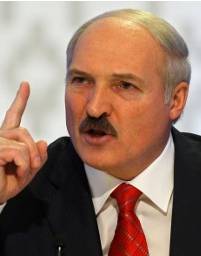
The founder of the Swedish PR firm which dropped hundreds of pro-free speech teddy bears over Belarus has mocked president Alexander Lukashenko as an "armed clown" following the arrest of people suspected of aiding in the pro-democracy stunt.
- Bookmark :
- Digg
- del.icio.us
- Stumbleupon
- Redit it
- Posted by - (0) Comment
- Bookmark :
- Digg
- del.icio.us
- Stumbleupon
- Redit it
- Posted by - (0) Comment
Lithuania may delay
its euro-adoption
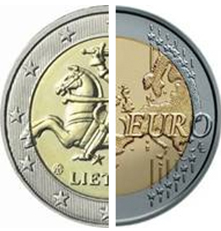
SWEDBANK: Lithuania may delay its euro-adoption goal beyond 2014 because the currency area’s debt crisis is worsening and its government lacks “political determination” before a parliamentary ballot.
Lithuania may be wary of providing aid to ailing euro-region members such as Greece, Swedbank economists Nerijus Maciulis and Lija Strasuna says in an e-mailed report. While it has a good chance of meeting entry criteria by next April, neighbouring Latvia has stronger political resolve to adopt the currency the following year, they write.
“There seems to be a more unanimous agreement to meet Maastricht criteria for the sake of stability, but not necessarily in order to adopt the euro immediately” in Lithuania, Swedbank says. “There’s a probability Lithuania won’t apply formally for euro adoption in 2014 -– much of this will depend on election results in October, as well as the euro area’s progress toward a sustainable solution.”

Latvia and Lithuania are likely to meet the Maastricht criteria in early 2013 and were both expected to join the euro zone in 2014.
Thus, by 2014, the two countries may be able to take full advantage of the benefits offered by the membership in Economic and Monetary Union, according to the Swedbank economists.
According to Chief Economist at Swedbank Nerijus Maciulis, Lithuanian politicians avoid making decisions and even discussing the subject because of the recent fall of the euro popularity and the public's trust in the future of the single currency.
However, the economist points out that the risk of the euro future is not high enough to forget a long-term strategic goal of Lithuania.
The passive attitude of the responsible Lithuanian authorities is also reflected in the survey of the Eurobarometer which reveals that 60% of residents in Lithuania say that they do not get enough information about the euro.
However, the study conducted by the European Commission shows that 44% of population support the euro adoption and 5% have not decided yet. Maciulis says that the euro benefits are tangible and easily measured.
"There seems to be a more unanimous agreement to meet Maastricht criteria for the sake of stability, but not necessarily in order to adopt the euro immediately" in Lithuania, Swedbank
economists Nerijus Maciulis and Lija Strasuna said in an e-mailed report.
Lithuania and Latvia are next in line to join the 17-nation Euro Area, while other Eastern European nations such as Poland and the Czech Republic show slow preparations as the debt crisis deepens.
In 2006, Lithuania became the only nation rejected for euro adoption after it missed an inflation target by 0.1 percentage point.
Estonia became the 17th member of the Euro Area in 2011.
- Bookmark :
- Digg
- del.icio.us
- Stumbleupon
- Redit it
- Posted by - (0) Comment
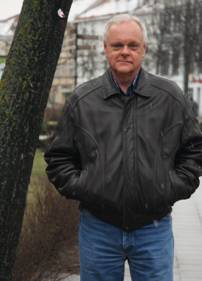
Vin Karnila, Associate Editor
Today:
CONSEQUENCES OF THE TOTALITARIAN REGIME IN LITHUANIA 1940–1953
My greatest hope is that this story will bring out the information that still to this day is unknown: Where are the people that were executed after 1950 buried?
Look for the first part of our six part story which will be out in a few days…
_________________________________
From

Carol Luschas
Thanks for posting this on the forum! These victims need their story heard and remembered!
_________________________________

Arunas Teiserskis
The Tuskulenai memorial is to commemorate the victims of Soviet crimes. It is a fact, that majority of the people killed in Soviet repressions were innocent men and women, who were simply deemed as "dangerous" for the imposition of Soviet rule: community leaders, clergy, other people, who were generally called a national elite or other persons, who sometimes might have even been accused by jealous neighbours for very personal matters, but without proper legal procedures having no chance to defend their innocence.
There were, of course, some who participated in LAF* actions. But make no mistake - if the person was clearly known for participation in crimes against humanity, he or she was given a very public process, just to present him as an evil to the society and make Soviets look good.
The Soviets put a lot of emphasis on propaganda after all. The ones killed by Soviets silently behind closed door there mainly people, which Soviets struggled to present as evil.
There is no denial, that some victims have been active LAF members and have participated in Holocaust, but deeming ALL victims as "a bunch of Jew murderers", makes you very similar to the people who justify the Holocaust telling that Jewish were very supportive in Soviet occupation and some of them even actively participated in deportations just before German attack on the Soviet Union.
We all agree that some very few Jews who entered Soviet NKVD (alongside leftist Lithuanians as well) doesn't justify pogroms on all Jews during WWII, so we should equally agree that some very few Lithuanians, who actively supported Nazism and committed crimes against humanity, doesn't justify Soviet terror after WWII on Lithuanian nation, particularly it's national elite, in order to destroy that nation as separate entity and assimilate it into uniform Soviet nation.
* Lithuanian Activist Front or LAF (Lithuanian: Lietuvos Aktyvistų Frontas) was a short-lived resistance organization established in 1940 after Lithuania was occupied by the Soviet Union. The goal of the organization was to liberate Lithuania and re-establish its independence. It planned and executed the June Uprising and established the short-lived Provisional Government of Lithuania. The Government self-disbanded and LAF was banned by Nazi authorities in September 1941. LAF remains rather controversial due to its anti-Semitic and anti-Polish views.
- Bookmark :
- Digg
- del.icio.us
- Stumbleupon
- Redit it
- Posted by - (0) Comment
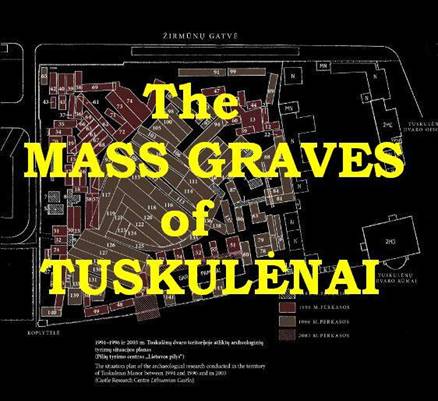
Situation plan created by and property of Castle Research Center Lithuanian Castles. All rights reserved
Between 28 September 1944 and 16 April 1947, the death penalty was carried out on 767 people in the NKGB–MGB internal prison in Vilnius. It took forty seven years and the restitution of Lithuania’s freedom to finally find the secret location where the Soviets had buried the victims.
- Bookmark :
- Digg
- del.icio.us
- Stumbleupon
- Redit it
- Posted by - (6) Comment

Situation plan created by and property of Castle Research Center Lithuanian Castles.
All rights reserved
Between 28 September 1944 and 16 April 1947, the death penalty was carried out on 767 people in the NKGB–MGB internal prison in Vilnius. It took forty seven years and the restitution of Lithuania’s freedom to finally find the secret location where the Soviets had buried the victims.
INTRODUCTION
The Genocide and Resistance Research Centre of Lithuania is a state institution which investigates all manifestations of genocide and crimes against humanity, the persecution during the Soviet and Nazi occupations and the armed and peaceful resistance to the occupations. It also gives juridical evaluations of the perpetrators of the reprisals and genocide, and immortalizes the memory of the freedom fighters and genocide victims.
The objectives of the centre are to establish historical truth and justice; to investigate the physical and spiritual genocide of Lithuanians carried out by the occupying regimes between 1939 and 1990, and the resistance to the regimes; to immortalize the memory of the freedom fighters and the genocide victims; and to initiate the juridical evaluation of the aftermath of the occupying regimes. The centre also researches into the policy of the occupying regime in the
The
While the

Starting in autumn 1944, death penalties passed by Military Tribunals of the

This story about the Memorial Complex of the

So what I thought would be a story I could complete in two or three days turned into three months of research, meetings, visits to various government offices, telephone conversations and emails back and forth. While much of the text for this article was prepared by the expert staff of the Tuskulėnai Memorial Complex, there are so many other government offices, organizations and people that are involved with the Tuskulėnai Memorial Complex and the information for this article. What took all the time to prepare this article was getting all the information together. I must give credit to where credit is due. In effect I only acted as the person that put all this together so that it could be published for you our readers. The real work and all the credit for this article goes to the dedicated professional staff of the Tuskulėnai Memorial Complex and all the other government offices, organizations and people that have done all the research and work to tell the story of what happened here and give a dignified final resting place for the victims.

The next time you are in

It is my hope that this information we share with you will provide some insight as to the tragic events that were taking place at the KGB prison and Tuskulėnai during the Soviet occupation of Lithuania. I hope that it will also give you some idea as to all the diligent effort that so many people have put in and are still putting in to honor the victims and try to bring some closure for their families and relatives.

My greatest hope is that this story will bring out the information that still to this day is unknown
Where are the people that were executed after 1950 buried?
Look for the first part of our six part story which will be out in a few days
CONSEQUENCES OF THE TOTALITARIAN REGIME
IN
Su pagarbe
Vincas Karnila
Associate editor
- Bookmark :
- Digg
- del.icio.us
- Stumbleupon
- Redit it
Over the River and through the Woods
- Posted by - (0) Comment

Kestutis Eidukonis tells us in this story about his experiences on what you have to expect when you travel out of Vilnius to experience the Lithuanian countryside…
As a frequent visitor to Lithuania, I find an interesting disconnect from beautiful Vilnius and the rest of the countryside - I do not mean Kaunas or the rest of the major cities, but the real countryside where the rest of the Lithuania lives, works and fights their daily fight with bureaucracy and the legacy of Homo Sovieticus.
In Vilnius, you have the beauty of Old Town (Senamiestis) Pilies street and all that that entails. Sure there is the occasional fight with the beggars, the graffiti and the out of control druggie or local character of interest such as Grafas or Rozyte. In the "Kaimas" however you are dealing with people who take every occasion to get drunk, who are set in the old ways. The un mown grass, the flies, the mosquitoes, the bad roads, the problem of getting anything fixed. The lack of motivation of some of the locals. The negative attitudes towards city folks and the government. Try to get a plumber or electrician to drive 40 kilometers to fix anything. All these problems however pale in comparison to the biggest battle that lies ahead for anyone who plans to farm or work on reforestation.
- Bookmark :
- Digg
- del.icio.us
- Stumbleupon
- Redit it
Over the River and through the Woods
- Posted by - (0) Comment

Kestutis Eidukonis tells us in this story about his experiences on what you have to expect
when you travel out of Vilnius to experience the Lithuanian countryside…
As a frequent visitor to Lithuania, I find an interesting disconnect from beautiful Vilnius and the rest of the countryside - I do not mean Kaunas or the rest of the major cities, but the real countryside where the rest of the Lithuania lives, works and fights their daily fight with bureaucracy and the legacy of Homo Sovieticus.
In Vilnius, you have the beauty of Old Town (Senamiestis) Pilies street and all that that entails. Sure there is the occasional fight with the beggars, the graffiti and the out of control druggie or local character of interest such as Grafas or Rozyte. In the "Kaimas" however you are dealing with people who take every occasion to get drunk, who are set in the old ways. The un mown grass, the flies, the mosquitoes, the bad roads, the problem of getting anything fixed. The lack of motivation of some of the locals. The negative attitudes towards city folks and the government. Try to get a plumber or electrician to drive 40 kilometers to fix anything. All these problems however pale in comparison to the biggest battle that lies ahead for anyone who plans to farm or work on reforestation.
I am talking about the problems people are having with Heracleum sosnowskyi or Sosnowskyi Hogweed. Known in Lithuanian as Sosnovskio barštis. This plant was introduced in Stalin's time and is really getting out of control in a lot of parts of the countryside. So far the government and the EU have done little or nothing to help people fight this problem. The biggest problem with this plant is that it is spreading like wildfire in areas of the country which have been neglected or abandoned. It is extremely dangerous to humans. The liquid sap from the plant causes burns and blisters which can require hospitalization. The EU and the Lithuanian government have done little to help fight this problem other than publishing a some advise on how to get rid of it. The problem is that getting rid of it is very expensive if you use chemicals or hand labor. This is not an individual farmers or landowners problem. You can clean up your parcel using very expensive chemicals or hand labor only to be re infested from your less diligent neighbor or the Lithuanian Government owned land next to yours.

Sosnowskyi Hogweed. Known in Lithuanian as Sosnovskio barštis
What really aggravates the situation and gets under the skin of the situation is to see projects out there which are a total waste of EU and GOL Government of Lithuania moneys. I can walk to a project that was financed by the EU to set up a road and bike trails for tourists to visit the so called highest spot in Lithuania. Gedanoniu Kalva or Gedanonių hill in English. This is supposed to be a tourist attraction which generates revenue for the locality. The problem is that in clearing the hill top and building the pretty wooden staircase to the top of the hill, the access roads from Nemaitonys and Aukstadvaris were so badly torn up that vehicle access to the area from Nemaitonys is difficult and almost impossible from the Velnio Duobe (Devils Ditch) to Aukstadavaris even with four wheel drive. Within walking distance of this hill the local residents are muttering curses under their alcohol sodden breaths while fighting the barštis!

Gedanoniu Kalva (Gedanonių Hill).
Don't get me wrong there are a lot of pleasant things out in the beautiful "Kaimas" The storks, the swallows flying around the house, the occasional deer. The pleasure of sitting around a bonfire in the evening talking to friends and family and occasionally singing a Lithuanian song, the smell of fresh mown grass, the gorgeous flowers, the rye waving in the fields, the sight of wheat. But at times the frustration and aggravation is overwhelming.
Ah, how good it feels to get back to Vilnius!
Kestutis Eidukonis
- Bookmark :
- Digg
- del.icio.us
- Stumbleupon
- Redit it
- Posted by - (0) Comment
Lithuania may delay
its euro-adoption

SWEDBANK: Lithuania may delay its euro-adoption goal beyond 2014 because the currency area’s debt crisis is worsening and its government lacks “political determination” before a parliamentary ballot.
Lithuania may be wary of providing aid to ailing euro-region members such as Greece, Swedbank economists Nerijus Maciulis and Lija Strasuna says in an e-mailed report. While it has a good chance of meeting entry criteria by next April, neighbouring Latvia has stronger political resolve to adopt the currency the following year, they write.
“There seems to be a more unanimous agreement to meet Maastricht criteria for the sake of stability, but not necessarily in order to adopt the euro immediately” in Lithuania, Swedbank says. “There’s a probability Lithuania won’t apply formally for euro adoption in 2014 -– much of this will depend on election results in October, as well as the euro area’s progress toward a sustainable solution.”

Latvia and Lithuania are likely to meet the Maastricht criteria in early 2013 and were both expected to join the euro zone in 2014.
Thus, by 2014, the two countries may be able to take full advantage of the benefits offered by the membership in Economic and Monetary Union, according to the Swedbank economists.
According to Chief Economist at Swedbank Nerijus Maciulis, Lithuanian politicians avoid making decisions and even discussing the subject because of the recent fall of the euro popularity and the public's trust in the future of the single currency.
However, the economist points out that the risk of the euro future is not high enough to forget a long-term strategic goal of Lithuania.
The passive attitude of the responsible Lithuanian authorities is also reflected in the survey of the Eurobarometer which reveals that 60% of residents in Lithuania say that they do not get enough information about the euro.
However, the study conducted by the European Commission shows that 44% of population support the euro adoption and 5% have not decided yet. Maciulis says that the euro benefits are tangible and easily measured.
"There seems to be a more unanimous agreement to meet Maastricht criteria for the sake of stability, but not necessarily in order to adopt the euro immediately" in Lithuania, Swedbank
economists Nerijus Maciulis and Lija Strasuna said in an e-mailed report.
Lithuania and Latvia are next in line to join the 17-nation Euro Area, while other Eastern European nations such as Poland and the Czech Republic show slow preparations as the debt crisis deepens.
In 2006, Lithuania became the only nation rejected for euro adoption after it missed an inflation target by 0.1 percentage point.
Estonia became the 17th member of the Euro Area in 2011.
- Bookmark :
- Digg
- del.icio.us
- Stumbleupon
- Redit it
- Posted by - (0) Comment
Video:
Lithuanian swimmer Rūta Meilutytė takes FIRST place in London Olympics...

Stephanie Samaitis Carnell something to enjoy and celebrate…she's done it! woohooo!

Kazys Preikšas LITHUANIAN TORPEDO HITS THE GOALD! THE GOAL! THE GOLD!
you know what I mean

Daiva Repeckaite I love the story - fame for Lithuania is brought by a 15-year-old woman, a daughter of a migrant worker in the UK. In your face, basketball machos :) I hope this will become an impetus to make different sports more equal in Lithuania, to strive for a fairer distribution of public funds for sports, and, finally, to strive for gender equality in the funding and social prestige of sports.

Mark SPLINTER totally. this story is just absolutely perfect in so many ways.

Carol Luschas I love the story too! Lithuanians play with such heart and dedication! I understand the training involved for such a great sport! Remember waking up at 5 AM for morning practice and later in the afternoon for a second. Countless hours putting my body through so much! Butterfly was my stroke! My grandfather would always say: "Niekada Nepasiduok!" He told me to say this to myself whenever I needed a boost of confidence especially during a race!
- Bookmark :
- Digg
- del.icio.us
- Stumbleupon
- Redit it
The Lithuanian Cinderella
- Posted by - (0) Comment
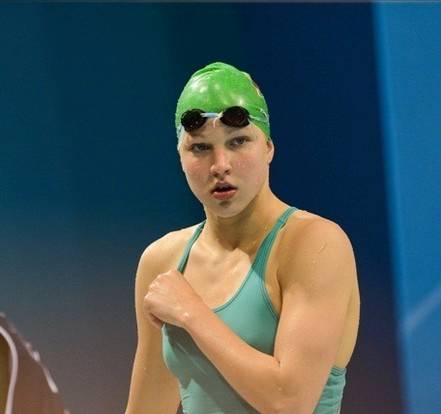
Rūta Meilutytė (born 19 March 1997). This week, at the Summer Olympics in London, she won the gold medal in the women's 100 meter breaststroke with
a time of 1:05.47, becoming the first Lithuanian swimmer since Lithuania's Declaration of Independence from the Soviet Union in 1990 to earn an
Olympic medal in swimming.
Photo: Wikipedia
Fifteen-year-old Rūta Meilutytė is a refreshingly outstanding representative of the original spirit of sports at a time when seriousness and the business aspects of sports often takes over for joy and the more fundamental aspects of the competitions.
Rūta has managed to grow strong, athletic and competitive-focused in spite of a difficult childhood in a country where training opportunities in swimming and many other sports are bad, because here in Lithuania it’s mostly just basketball that counts.
Her gold medal in the Olympics shows that even a young girl who is not raised and trained as a professional athlete since birth, can manage to reach even the highest goals in the sports world.
She is a true Cinderella of our days!
- Bookmark :
- Digg
- del.icio.us
- Stumbleupon
- Redit it
The Lithuanian Cinderella
- Posted by - (4) Comment
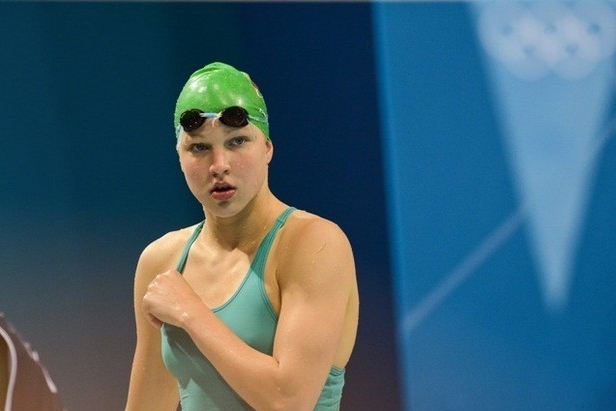
Rūta Meilutytė (born 19 March 1997). This week, at the Summer Olympics in London, she won the gold medal in the women's 100 meter breaststroke with a time of 1:05.47, becoming the first Lithuanian swimmer since Lithuania's Declaration of Independence from the Soviet Union in 1990 to earn an Olympic medal in swimming.
Photo: Wikipedia
Fifteen-year-old Rūta Meilutytė is a refreshingly outstanding representative of the original spirit of sports at a time when seriousness and the business aspects of sports often takes over for joy and the more fundamental aspects of the competitions.
Rūta has managed to grow strong, athletic and competitive-focused in spite of a difficult childhood in a country where training opportunities in swimming and many other sports are bad, because here in Lithuania it’s mostly just basketball that counts.
Her gold medal in the Olympics shows that even a young girl who is not raised and trained as a professional athlete since birth, can manage to reach even the highest goals in the sports world.
She is a true Cinderella of our days!
Rūta had just turned four years old when a terrible accident dramatically affected her and her family forever. Her mother, Ingrida, was on Easter visit to Vilnius and was about to cross a street in the pedestrian crossing when a car struck her so violently that she later died of the injuries.
Rūta's father, Saulius Meilutis, lived at this time in the United States, where he worked to support his family home in Lithuania, and Rūta started therefore living with her grandmother after her mother’s tragic death. She moved to the grandmother with her brothers Margiris and Mindaugas.
Already at an age of seven, her Kaunas coach, Giedrius Martinionis, seeing how well-built she was, told her father: ‘You must take her to swimming lessons – there will come a time when this little girl will be breaking country’s records’.
When Rūta was eight years old her father moved home from the United States. But like other returnees, it appeared difficult for him to find a decent job here, so after only three years he went west again, setting course for the southern English town of Plymouth where he got a job in a care home as a caregiver for disabled persons.
“When I left for Plymouth, my sons were somewhat grown and relatively mature, but I was worried about my daughter. After turning thirteen, Rūta had ceased listening to her grandmother. She wanted to be more independent. So I decided to take her with me to England,” her father tells to the daily Lietuvos Rytas.
Rūta had before this been showing good results in Kaunas Swimming School, so one of the most important tasks for the father was to find a good swimming club and an experienced coach in Plymouth.
He found one of England’s best swimming clubs and persuaded the coach Jonathan Rudd to work with his daughter. The road to success started.
“In addition to the sweet taste of victory, the father, however, sees the other side of the medal too, experiencing what it means to be a father not just occasionally but always. He looks after his daughter every single day of the year: from preparing breakfast, to advising what to wear,” the father tells to Lietuvos Rytas.
“Rūta loves herring or smoked bacon with onions, but I cannot treat her like that often, for such food is not good for a sportsperson. An adolescent girl undergoing a lot of physical exertion needs the proper, wholesome food. Before the afternoon training I usually prepare some pasta, which is rich in carbohydrates. While after the training it is usually a high protein meal such as meat or fish with vegetables. For breakfast she normally eats a cereal. I usually add some banana slices and nuts to them,” the father says about her diet.
“Rūta is tall, slim and has long legs. Her feet are rather long too: my daughter already wears size 43 shoes. She inherited these traits from her mother Ingrida, who looked like a model: she was slim and had long legs,” the father tells.
“Rūta’s character, however, is similar to mine: she is a very determined girl. She was supposed to be born in early April under the sign of Aries. However, she came to the world earlier than the doctors expected – on 19 March, under the sign of Pisces. Therefore I call her my little fish with a ram’s character,” laughs the father.
“Agility and physical strength marked Rūta since her childhood. She was very strong because she used to climb the trees as a child, along with her brothers. She was no less agile than the boys,” the father recalls.
Rūta stood out from the same age children with her apparent winning mentality.
Even in ball games at school she used to be a leader of her team. Her shots were very precise.
Continuous honest work also served to harden the able-bodied Rūta.
The family lived in their own house, so the girl used to help her grandmother around. Rūta used to cut the firewood and chop it with an axe, prepare garden beds and rake leaves.
Like the original Cinderella…
- Bookmark :
- Digg
- del.icio.us
- Stumbleupon
- Redit it
- Posted by - (0) Comment
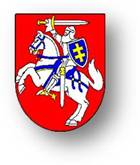
98th Annual Lithuanian
Days in Frackville,
Pennsylvania!
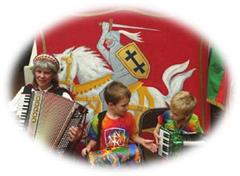
August 11-12, 2012
· AUGIS Lithuanian Pop & Folk Singer
· Sing a-long with Lynne Cox, Accordionist
· Malunas Dance Ensemble, Baltimore, MD
· Zilvinas, Dance Ensemble, Philadelphia, PA
· Gintaras Jr. Dance Ensemble, Mahanoy City, PA
· “Spins and Needles Guild” Weaving Demonstrations
· The Sensations Band
· Thomas Sadauskas: Lithuanian Genealogy Expert
· Pennsylvania National Guard
· Lithuanian Heritage Room
· Delicious Lithuanian Food
· Lithuanian Arts and Crafts:
Longest Running Consecutive Ethnic Festival in the USA!
Website: www.kofl144.weebly.com
- Bookmark :
- Digg
- del.icio.us
- Stumbleupon
- Redit it
VilNews e-magazine is published in Vilnius, Lithuania. Editor-in-Chief: Mr. Aage Myhre. Inquires to the editors: editor@VilNews.com.
Code of Ethics: See Section 2 – about VilNews. VilNews is not responsible for content on external links/web pages.
HOW TO ADVERTISE IN VILNEWS.
All content is copyrighted © 2011. UAB ‘VilNews’.

 Click on the buttons to open and read each of VilNews' 18 sub-sections
Click on the buttons to open and read each of VilNews' 18 sub-sections 







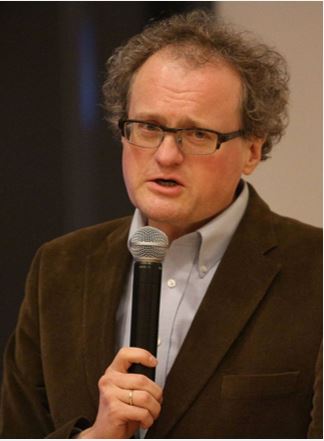

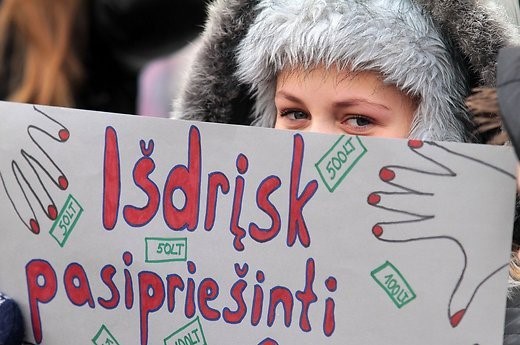


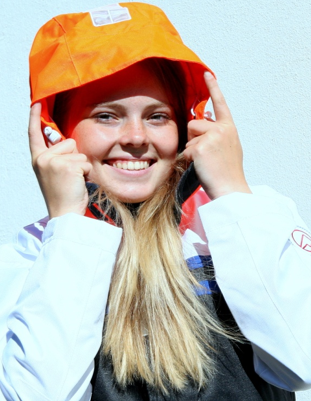
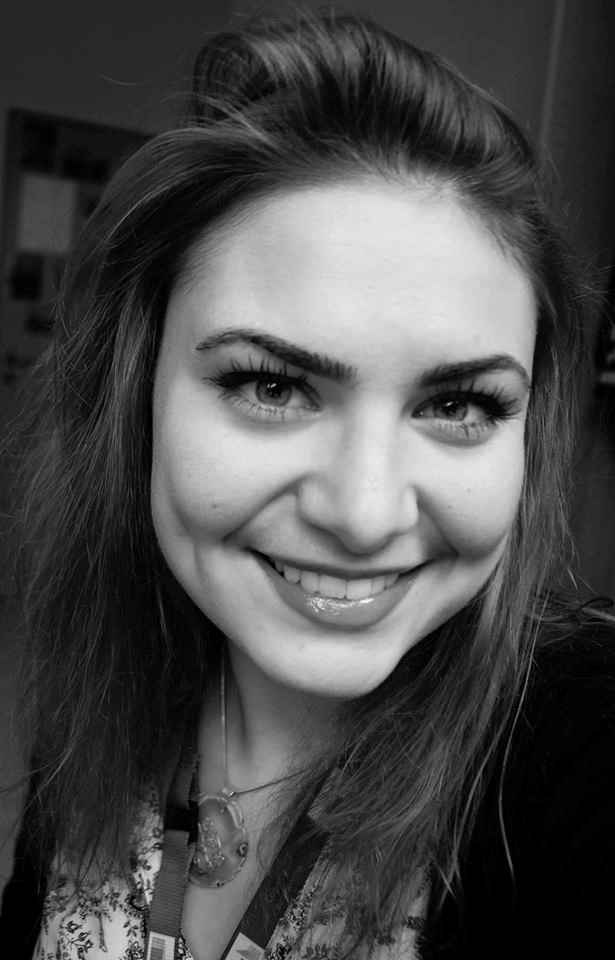

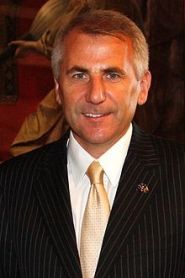
.jpg)
